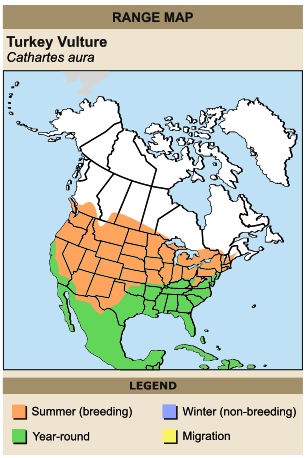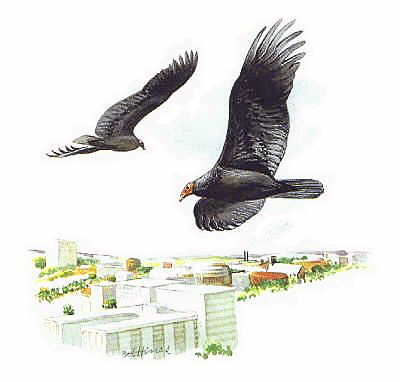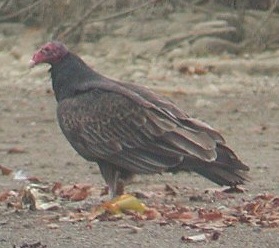
Medium vulture, mostly black with red, featherless head and upper neck.
Wings are held in a shallow V in flight. One of the few birds of prey
that is able to use its sense of smell to find food. They are attracted
to the smell of mercaptan, a gas produced by the beginnings of decay.

|
TURKEY
VULTURE
Cathartes aura
CICONIIFORMES
Vultures (Cathartidae)
Range and Habitat
Breeds from southern British Columbia, central Saskatchewan, the Great
Lakes, and New Hampshire southward. Spends winters in the Southwest
and eastern U.S. northward to southern New England. Preferred habitats
include deciduous forests, woodlands, and scrublands; often seen over
adjacent farmlands.
SOUNDS:
Generally silent

Turkey Vultures, like other carrion birds, are protected
from disease associated with decaying animals by a very
sophisticated immune system.
Unlike most birds, they have a keen sense of smell
allowing it to find dead animals below a forest canopy.
Like its stork relatives, it often defecate on its own legs, using the
evaporation of the water in the feces to cool itself.
A group of vultures has many collective nouns, including a "cast",
"committee", "meal", "vortex", and "wake"
of vultures.
The Turkey Vulture has a large range, estimated globally at 28,000,000
kilometers. Native to the Americas and nearby island nations, this bird
prefers subtropical or tropical shrubland, grassland, or forest ecosystems
as well as deserts, pastureland, and degraded former forests.

|





